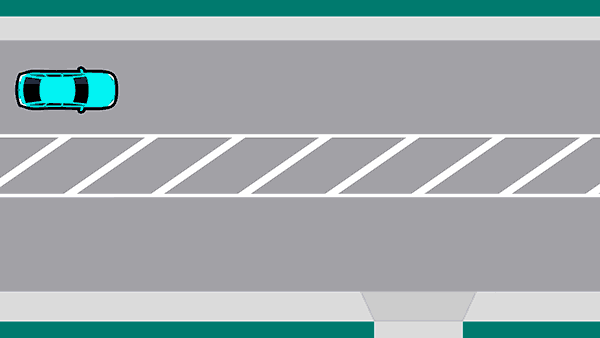A flush median is marked using diagonally painted white stripes in the middle of a road. They can give you a safe place to stop and wait for a gap in the traffic.

Where should you practise this?
Find a main road that has a side road to turn into and out of, with a flush median in the centre of the main road. Try this out at a time when there is a steady, but not heavy, flow of traffic.
Using a flush median to turn off a main road
Flush medians can be used when you want to turn off a main road but don’t want to hold up traffic. You wouldn’t normally drive in them, but when you want to turn off they can come in handy.
Using a flush median to turn right off a main road, you’ll need to:
- Get into the correct lane (if you’re turning off a multi-laned road)
- Plan where you want your car to end up on the flush median before you move onto it
- Use your intersection approach routine: mirrors, indicate, course, brake, gear (if you’re driving a manual), assess
- Choose a safe gap to complete the turn.
Using a flush median to turn onto a main road
Flush medians can also be used when traffic is heavy and you’re trying to turn onto a main road. You can wait on the flush median until there’s a safe gap for you to join the flow of traffic.
Before you pull onto the flush median, check:
- To the right, for a gap in traffic
- To the left, to make sure no-one is going to move onto the flush median where you want to turn.
Once you’re on the flush median and waiting to merge left, make sure you:
- Indicate left so other drivers know that you want to move off the flush median
- Check your mirrors and over your left shoulder before you move into the lane
- Accelerate and merge with the traffic when there’s a gap you can fit into.
Are you test ready?
Question

Next skill